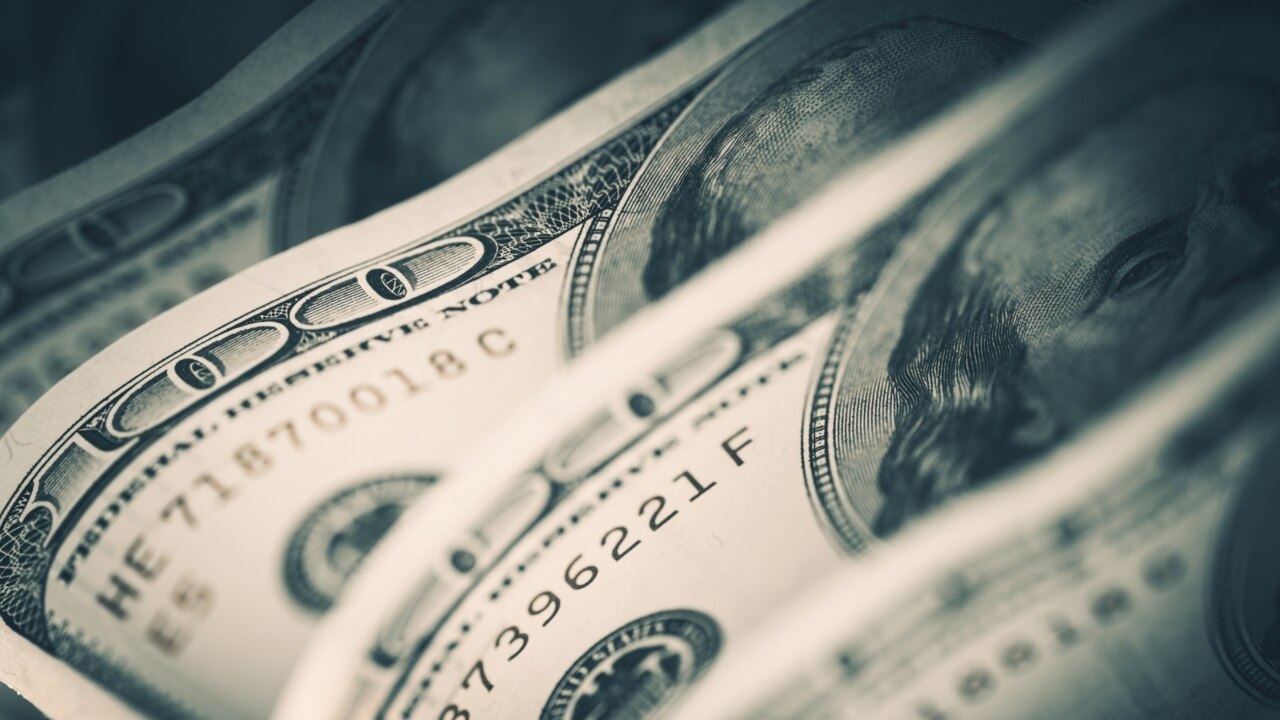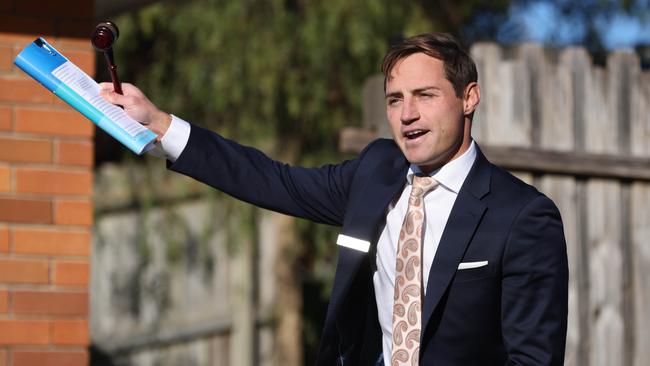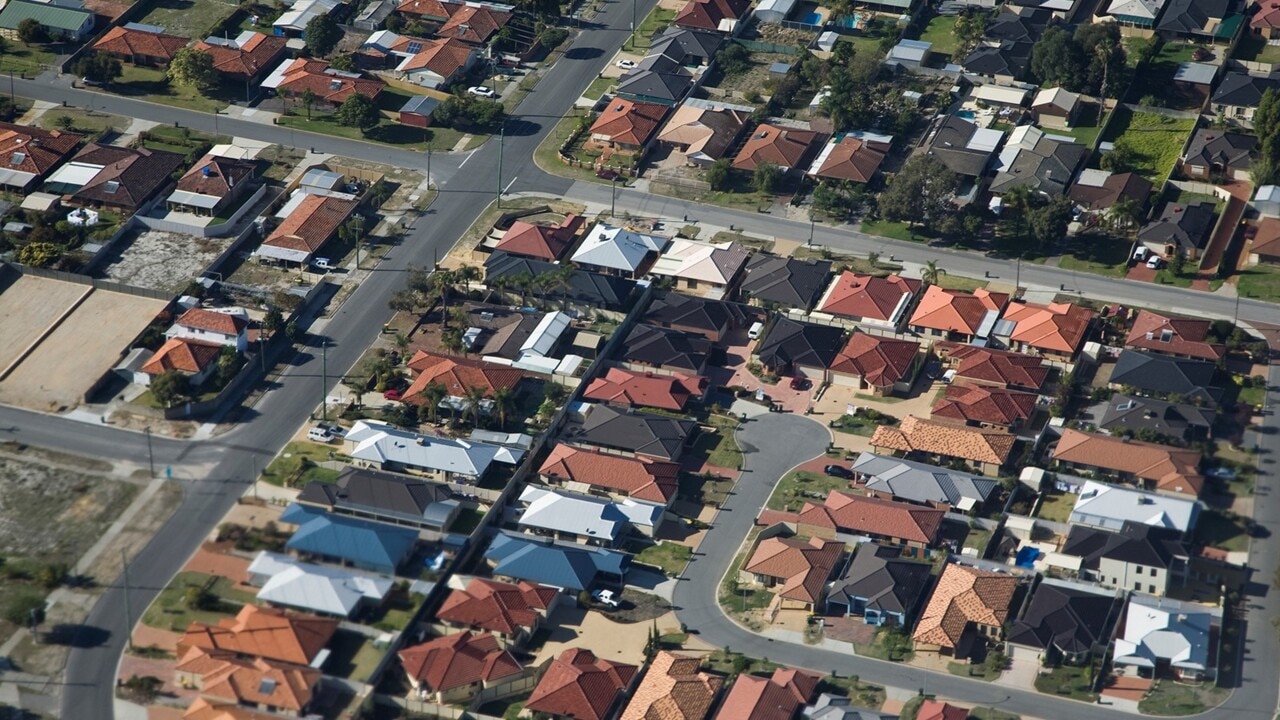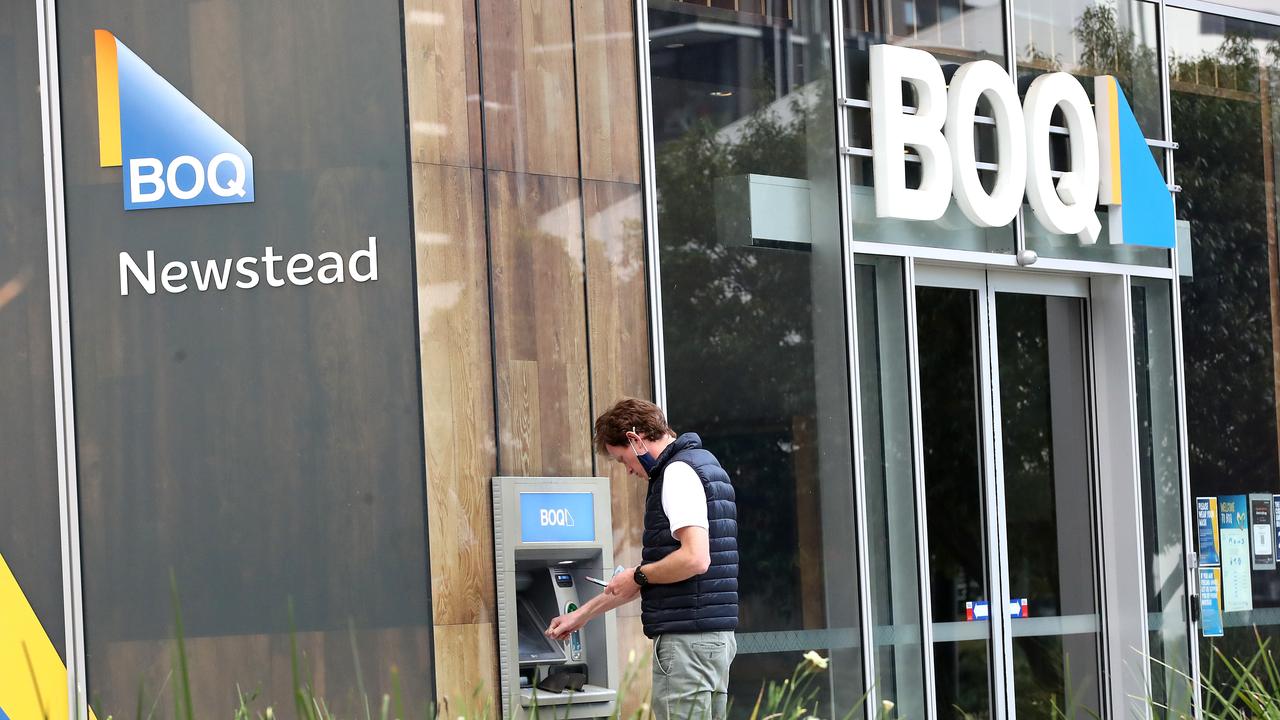US interest rates are rising even faster than ours. So what does that mean for Australia?
The US economy is the largest in the world and it just had its biggest interest rate rise in 28 years. So what does it mean for us?

Business
Don't miss out on the headlines from Business. Followed categories will be added to My News.
There’s a well-worn saying that in terms of the economy, “When America sneezes, the world catches a cold’’.
What does this mean? Well the US economy is the largest in the world, accounting for about a quarter of the economic activity on the globe.
And in a globalised world, where countries are increasingly interlinked in terms of trade, when the biggest game in town starts to suffer, that tends to have a ripple effect.
It’s not completely straightforward - Australia has had probably the most resilient economy among developed nations over the past couple of decades, largely due to the strength of our mining sector, however the storm clouds are definitely brewing offshore.
We’ve taken a look at what that might mean for us.
What’s going on in the US?
Overnight in the US, the Federal Reserve, their version of the Reserve Bank, lifted the federal funds rate by 0.75 percentage points to 1.75 per cent.
This was the biggest rate rise in 28 years, and is designed to slow down runaway inflation in the US, which is sitting at 8.6 per cent over the 12 months to May - the highest level since early 1981.
The Fed’s chairman Jerome Powell has forecast another rate rise of between 50 and 75 basis points next month, and forecasts are for the rate itself to hit 3.4 per cent at least by the end of the year.
The idea behind the strategy is that high interest rates will slow the economy down, and bring inflation back towards the target rate of 2 per cent.
Inflation is caused by many factors, but some elements currently at play in the US - and in Australia - are very low unemployment, which then translates into wages growth, supply problems caused by production and logistics bottlenecks globally, high costs for fuels for transport and energy, caused largely by the Ukraine war, and the spill-over effect from years of low interest rates which have pumped up prices of assets such as residential housing and shares.
Will the US enter a recession?
The risk in raising rates fast is that the economy screeches to halt, and enters a recession, defined as two consecutive quarters of negative growth.
Many analysts are fairly convinced the US will indeed enter a recession in the next year, and growth in the US economy was already negative in the March quarter.
The Economist Intelligence Unit is more hopeful, predicting that US economic growth will slow sharply over this year and the next, “owing to stubbornly high inflation, rising interest rates and stalling growth elsewhere’’.
“We expect consumer demand to be resilient enough to avoid an outright recession, thanks in part to the tight labour market and strong household balance sheets. However, this does not mean that a recession is completely off the cards.’’
What does it mean for our economy?
The inflation problem is not limited to the US, as has already been pointed out, and we’re attacking it in the same way, with higher interest rates.
NAB Group Economics says the “risk is that the speed and degree of policy tightening may prove too much for economies to handle, particularly given the commodity price shock currently in play’’.
“As a result, while not our current baseline forecast, recession risk for several of the major advanced economies, including the US, is uncomfortably high.’’
Australia is an exporting economy, so slower economic growth among our trading partners is not great news, but on the whole, the Australian economy is looking pretty resilient.
The RBA said last week that our economy grew 0.8 per cent in the March quarter and 3.3 per cent over the year.
“Household and business balance sheets are generally in good shape, an upswing in business investment is underway and there is a large pipeline of construction work to be completed.
“The labour market is also strong. Employment has grown significantly and the unemployment rate is 3.9 per cent, which is the lowest rate in almost 50 years.’’
But ... the RBA says one source of uncertainty is how household spending holds up in the face of increasing pressure from higher inflation and interest rates.
What about house prices?
It’s not related to the US economy, but if there’s one thing which will put a crimp on real estate prices, it’s interest rate increases.
We’ve already seen most markets nationally start to slip, and investment bank Jarden is expecting there’s more pain to come.

The bank is expecting a peak to trough decline of up to 20 per cent with falls in Sydney and Melbourne tipped to be larger and hit sooner.
This would be the biggest house price correction in four decades, but as the RBA pointed out last week, despite recent falls, house prices are still up more than 25 per cent over the pandemic period.
What does it mean for the Australian stock market?
Let’s start with the US market first. The two major events to hit global markets over the past two decades or so were the Dotcom crash in 2001 and Global Financial Crisis in 2008. During those two events the US market fell about 50 per cent, although according to Betashares chief economist David Bassanese, the usual “bear” or negative market fall is about 35 per cent.
Mr Bassanese is predicting that this will be the drop on US markets this time around, so from the January peak of 4796 points, the S&P 500 index in the US could fall to 3100, from 3789 at the moment.
“For investors, periods of U.S. recession and associated bear markets can be difficult periods to endure. But the lesson of history is that markets do eventually bounce back,’’ Mr Bassanese says.
“Good buying opportunities will emerge in this period, especially in the now downtrodden growth/technology sectors which still offer strong long-term earnings potential and will benefit from an eventual return to lower inflation and steadier interest rates.’’
As for the Australian market, Mr Bassanese says there is still further to fall also.
“The local share market will not be immune to further Wall Street weakness, especially as we also face uncomfortably high inflation and likely aggressive RBA rates hikes in coming months,’’ he says.
“Consumer sentiment has already tumbled and house prices are starting to weaken.’’
Mr Bassanese is predicting the ASX 200 will fall to at least 6000 in coming months, down from its peak of 7592 on April 21 and 6625 on Thursday.
What does it mean for interest rates here?
We run our own race in Australia, but our economy is facing many of the same challenges the US does. While our inflation isn't quite so high, at 5.1 per cent, it’s still well outside the comfort zone and the predictions are that interest rates in Australia will continue to rise in coming months.
Commonwealth Bank is expecting the Australian cash rate to increase from the current level of 0.85 to 2.1 per cent by the end of 2022.

Will interest rate rises fix inflation?
Interest rate increases have long been described as a blunt tool. The idea is that you put a crimp on the flow of money and the economy slows down.
But there are a lot of things they can’t fix. They can’t end the war in Ukraine and normalise global energy prices, they can’t fix the global semiconductor shortage which is slowing down the production of everything from cars to computers, they can’t unclog the world’s logistics routes and they can’t solve skills shortages in developed economies.
CommSec senior economist Ryan Felsman says, “Given this environment, inflation is likely to be slow and ‘sticky’ on its descent, meaning that the Fed will have to ‘front-load’ rate increases to dampen demand’’. Naturally, the same goes for Australia.
More Coverage
Originally published as US interest rates are rising even faster than ours. So what does that mean for Australia?





